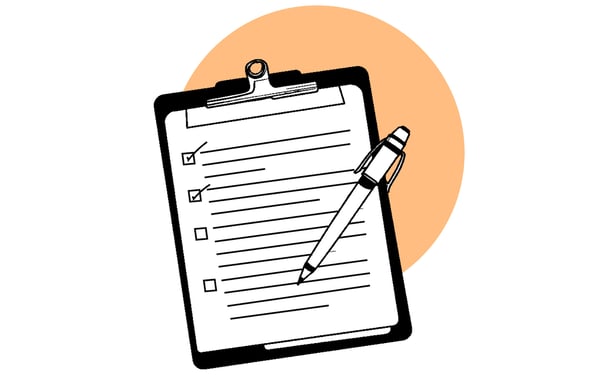Let's face it: getting a reader's attention and keeping it can be difficult. How many web pages have you closed before reading to the end?
Marketing data shows many web users dislike reading lengthy blocks of text. People want you to give them information, but they won't stick around for it if your layout is giving them a headache.
Your content not only needs to be interesting and relevant; it also needs to be consumable and attractive if you want to keep your visitors’ interest.
The difficulties of reading digitally
Digital copy is harder to read than paper copy because of the lack of physicality, according to Scientific American. Reading content on a screen can be mentally draining and tiring, as it 'requires a reader to consciously focus on both the text and how they are moving it'.
Plus, when you hold a book, you know when it'll end because you're able to judge the number of remaining pages. Scrolling down a lengthy webpage, on the other hand, has the illusion of infinity.
Because of this, web readers are more likely to take shortcuts by browsing content, skipping blocks of text and scanning for keywords and subheads.
What's the problem with that? They're probably missing vital points you wanted to communicate if you don't layout your content in a way that helps them.
Why digital design is important
You want people to read your content and trust you as a valuable source of knowledge. In order to do this, you'll need to overcome the difficulties of online reading. Cater your content to your audience's needs.
Firstly, recognise that your site design and content layout is vital. It not only demonstrates your brand identity, it also attracts leads. If you want your digital content to be readable, you need to adjust its visual qualities to help visitors digest your information.
Here are five of the ways you can improve the layout of your content and make your readers' experience more comfortable.
1. Insert images
 Put a relevant image at the beginning of your blog post to help draw visitors in. Studies show that we are able to identify the meaning of an image in as little as 13 milliseconds. Images can briefly summarise your copy for you and help make your posts visually appealing.
Put a relevant image at the beginning of your blog post to help draw visitors in. Studies show that we are able to identify the meaning of an image in as little as 13 milliseconds. Images can briefly summarise your copy for you and help make your posts visually appealing.
Include an image for every 350 words or so to help keep your audience captivated. These can include:
-
Infographics. People are more likely to remember information if it's given in an image format. Not to mention, infographics are perfect for sharing on social media.
-
Comics or memes. There's no harm in throwing in a little humour now and again. Entertain your audience.
-
CTAs. As well as benefiting your business by generating leads, calls-to-action can also help break up text within a blog post and aid a visitor with their reading.
2. Use snappy titles and subheadings
Titles and subheadings break up long text. They also let readers identify the content that is of the most use to them in their buyer's journey. This gives them control over what, and how much, they need to read.
Keep your titles short and to the point. Just like the body of your copy, if you leave them lengthy they won't keep readers interested.
Try to entice visitors with unique headings. Use humour, alliteration, pop-culture references, active verbs or negative words to attract attention. Talk directly to your audience and write something that you know they will click on.
Here's a clever example from our Bad Language blog.

3. Fire out some bullet points
Bullet points and numbered lists structure your content into bite-size, consumable chunks. It's much easier to read a list than it is a large paragraph. Also, numbered lists help readers to track their progress. This makes scrolling less challenging.
4. Write punchy paragraphs
Keep your paragraphs concise. If you welcome your visitors with a solid block of text, the likelihood is they'll close the tab and look elsewhere for information. Try to reduce the amount of sentences or stick to one idea per paragraph in order to keep your online readers interested.
Good examples of short, consumable paragraphs can be found on the BBC website. In the following screenshot, we can see single sentence paragraphs, each of which contain either one idea or quote. This straightforward layout is much easier to read than blocks of text.

It's also crucial that you don't indent paragraphs on web copy. Instead, leave whitespace between each paragraph. This keeps readers interested, as it acts as a visual breather. Without these spaces, content doesn't flow and words become difficult to read.
5. Explore the miracles of (white)space
Yes, colourful designs can be eye catching and fun, but they're also extremely distracting.
Whitespace encourages your readers to focus on the written content. It also makes your digital copy look professional and tidy. It keeps things in balance and helps to frame the structure and hierarchy of the content on the page.
Attractive copy keeps readers interested. Simple.
The content of your copy is important, but don't neglect its context.
Think about layout and design and harmonise that with what you’re trying to say. This gets the whole blog post working towards your ultimate goal. And that goal, of course, is providing your readers with useful content and nurturing them along their buyer’s journey.

(Hat tip to imgflip and the BBC for the images)







